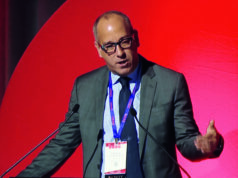
The prespecified interim analysis of the first 62 evaluable pulmonary embolism (PE) patients enrolled in the investigational RESCUE trial produced positive results, Thrombolex has announced.
RESCUE is a prospective multicenter, single-arm pivotal trial evaluating patient outcomes after treatment of acute intermediate risk PE. This pivotal trial is scheduled to enroll at least 100 evaluable patients. The trial is evaluating the efficacy and safety of the Bashir and Bashir S-B endovascular catheters in the treatment of acute PE under an investigational device exemption (IDE) from the Food and Drug Administration (FDA). An analysis of the interim data was presented in the late-breaking clinical trials session at this year’s International Symposium on Endovascular Therapy (ISET 2022) held Jan. 16–19 in Hollywood, Florida by Ripal Gandhi, MD, a cardiologist at Miami Cardiac and Vascular Institute in Miami, on behalf of the RESCUE investigators.
During this session, Gandhi reported new detailed data on the reduction of clot burden in segmental pulmonary arteries. According to Thrombolex, these initial data have not been reported in any of the previous clinical trials of acute PE.
The data demonstrated a 90% reduction in the number of totally occluded segmental pulmonary arteries (p<0.0001) and a 72% reduction in subtotal and total occlusions of segmental arteries (p<0.0001) at 48 hours post procedure compared to baseline by computed tomography (CT) angiogram. Each of the 20 segmental arteries showed a reduction in the degree of obstruction. The trial met its primary endpoint for reduction in right heart strain, and at 72 hours post procedure there were no major bleeds, no major adverse events and a zero-mortality rate. Collectively these patients experienced substantial improvement in hemodynamics and symptoms, which translated to improvements in right heart strain, cardiac function and functional status.
“These interim results from the RESCUE trial are very exciting,“ said Gandhi, a RESCUE trial investigator. “The reduction in thrombus burden at 48 hours after treatment, as assessed by the independent core lab, is remarkable especially with no bleeding complications. Complete resolution of thrombus burden should be an important goal of treatment. This represents a promising novel technology for the treatment of acute PE and other forms of large vessel venous thromboembolic disease.”
Thrombolex’s Bashir and Bashir S-B endovascular catheters have received FDA 510(k) clearance for the localized infusion of physician-specified fluids, including thrombolytics, into the peripheral vasculature. The goal of the RESCUE IDE study is to achieve an additional indication for use of these devices in the treatment of acute PE.











